Do you get Lp.pctonics.com pop-up ads on your web-browsers with high frequency? If yes, then it is possible that an adware (also known as ‘ad-supported’ software) is active on your system causing these undesired Lp.pctonics.com advertisements to appear. You should get rid of this adware as quickly as possible. Here, in this post below, you can found the useful guide on How to remove Lp.pctonics.com advertisements from your computer for free.
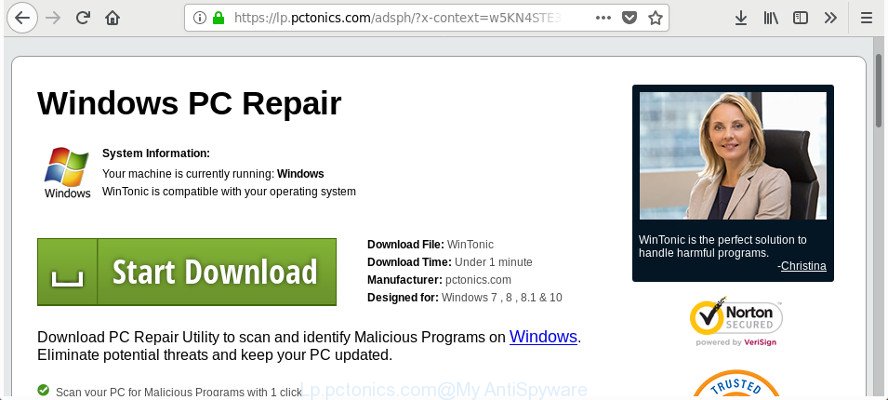
https://lp.pctonics.com/adsph/?x-context= …
The adware that created to redirect your browser to various ad web sites such as Lp.pctonics.com, is not a virus, but the virus behaves similarly. As a rootkit hides in the system, changes internet browser settings and blocks them from changing. Also the adware can install additional browser addons and modules that will inject advertising links within the Firefox, Internet Explorer, MS Edge and Google Chrome’s screen. Moreover, the adware may install browser hijacker that once started, will change the web browser’s start page and search provider. The worst is, the ad supported software be able to gather lots of confidential data about you such as what websites you are opening, what you are looking for the Internet and so on. This user information, subsequently, may be sold to third party companies.
Most often, the adware affects the most common web browsers like the Mozilla Firefox, Edge, Chrome and Internet Explorer. But such the malicious software as well may hijack another internet browsers by changing its shortcuts (adding an argument such as ‘http://site.address’ into Target field of a web-browser’s shortcut file). So every time you run the browser, it will reroute to the intrusive Lp.pctonics.com web site. Even if you setup a new startpage, an undesired website will be the first thing you see when you open the MS Edge, IE, Chrome and Mozilla Firefox.
To find out how to remove Lp.pctonics.com ads, we recommend to read the guidance added to this article below. The guide was created by experienced security researchers who discovered a method to get rid of the annoying adware out of the PC.
How to remove Lp.pctonics.com pop-up ads
When the ad supported software gets installed on your computer without your knowledge, it is not easy to uninstall. In most cases, there is no Uninstall program that simply delete the adware related to Lp.pctonics.com redirect from your machine. So, we advise using several well-proven free specialized utilities such as Zemana Anti-Malware, MalwareBytes Anti Malware or Hitman Pro. But the best way to remove Lp.pctonics.com redirect will be to perform several manual steps, after that additionally run antimalware tools.
To remove Lp.pctonics.com, execute the following steps:
- Manual Lp.pctonics.com popup ads removal
- Delete PUPs through the MS Windows Control Panel
- Fix web-browser shortcuts, changed by adware
- Remove unwanted Scheduled Tasks
- Remove Lp.pctonics.com advertisements from Google Chrome
- Delete Lp.pctonics.com pop-ups from Microsoft Internet Explorer
- Remove Lp.pctonics.com from Firefox by resetting browser settings
- How to remove Lp.pctonics.com pop-up advertisements with free programs
- Use AdBlocker to block Lp.pctonics.com and stay safe online
- Don’t know how your internet browser has been hijacked by Lp.pctonics.com pop-up advertisements?
- To sum up
Manual Lp.pctonics.com popup ads removal
Read this “How to remove” section to know how to manually remove adware which reroutes your web-browser to unwanted Lp.pctonics.com webpage. Even if the tutorial does not work for you, there are several free malicious software removers below that can easily handle such adware that causes multiple undesired pop-up advertisements.
Delete PUPs through the MS Windows Control Panel
Some of potentially unwanted applications, adware and hijackers can be removed using the Add/Remove programs tool that is located in the Microsoft Windows Control Panel. So, if you’re running any version of MS Windows and you have noticed an unwanted program, then first try to remove it through Add/Remove programs.
Windows 8, 8.1, 10
First, click the Windows button
Windows XP, Vista, 7
First, press “Start” and select “Control Panel”.
It will display the Windows Control Panel as on the image below.
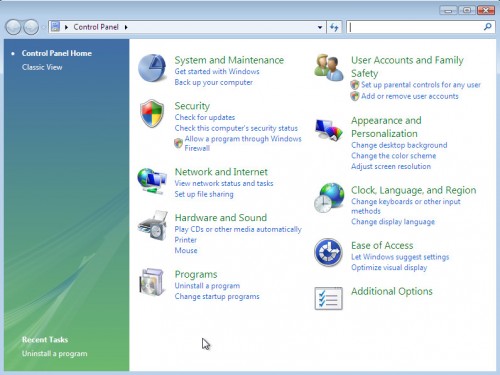
Next, press “Uninstall a program” ![]()
It will show a list of all programs installed on your system. Scroll through the all list, and uninstall any dubious and unknown software. To quickly find the latest installed applications, we recommend sort applications by date in the Control panel.
Fix web-browser shortcuts, changed by adware
Important to know, most anti-malware software that are able to delete ad supported software that causes multiple undesired pop-up advertisements, but unable to scan for and recover modified shortcuts. So, you need to fix the desktop shortcuts for your Google Chrome, Internet Explorer, Mozilla Firefox and Microsoft Edge web-browsers manually.
Right click on the shortcut of infected internet browser as shown in the figure below.
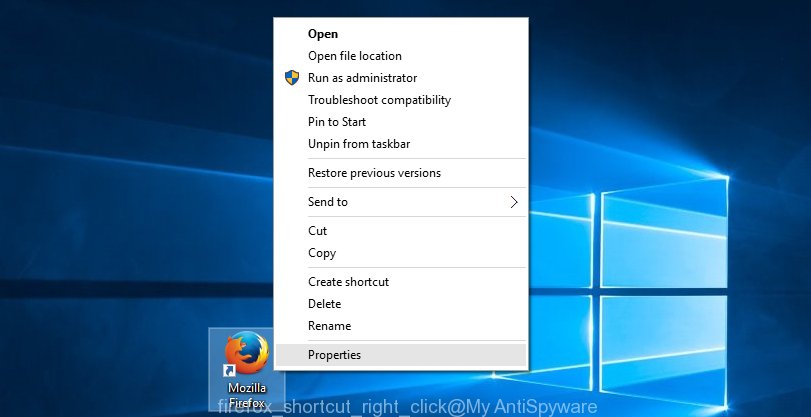
Select the “Properties” option and it will display the shortcut’s properties. Next, click the “Shortcut” tab and then delete the “http://site.address” string from Target field as shown below.
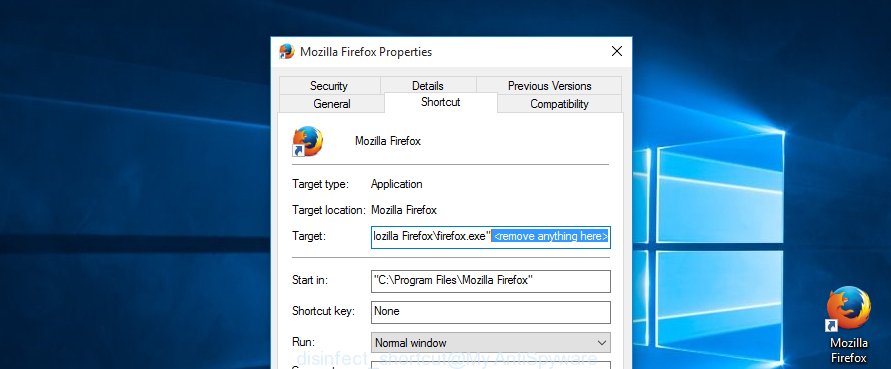
Then click OK to save changes. Repeat the step for all web-browsers which are redirected to the Lp.pctonics.com intrusive website.
Remove unwanted Scheduled Tasks
If the unwanted Lp.pctonics.com site opens automatically on Windows startup or at equal time intervals, then you need to check the Task Scheduler Library and remove all tasks which have been created by unwanted programs.
Press Windows and R keys on your keyboard together. It will open a dialog box which titled as Run. In the text field, type “taskschd.msc” (without the quotes) and press OK. Task Scheduler window opens. In the left-hand side, click “Task Scheduler Library”, as displayed in the figure below.
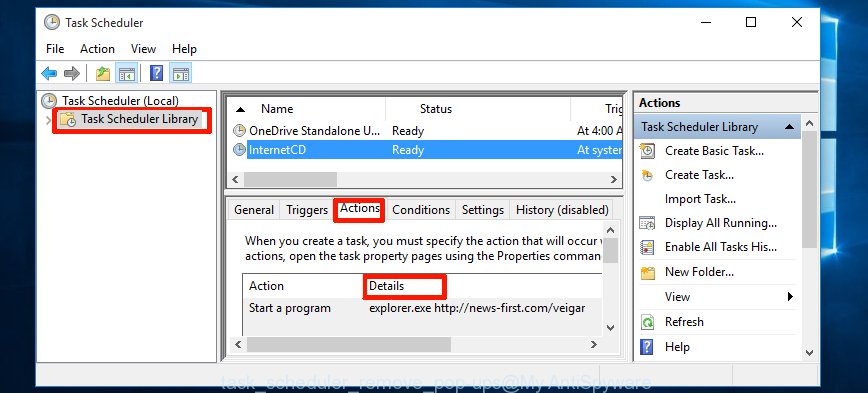
Task scheduler, list of tasks
In the middle part you will see a list of installed tasks. Select the first task, its properties will be show just below automatically. Next, press the Actions tab. Necessary to look at the text which is written under Details. Found something like “explorer.exe http://site.address” or “chrome.exe http://site.address” or “firefox.exe http://site.address”, then you need delete this task. If you are not sure that executes the task, then google it. If it is a component of the adware, then this task also should be removed.
Further press on it with the right mouse button and select Delete as on the image below.

Task scheduler, delete a task
Repeat this step, if you have found a few tasks that have been created by ‘ad-supported’ application. Once is finished, close the Task Scheduler window.
Remove Lp.pctonics.com advertisements from Google Chrome
Reset Google Chrome settings is a easy way to remove the browser hijacker infections, malicious and ‘ad-supported’ extensions, as well as to restore the internet browser’s search provider by default, homepage and newtab that have been changed by adware which cause undesired Lp.pctonics.com pop ups to appear.
Open the Google Chrome menu by clicking on the button in the form of three horizontal dotes (![]() ). It will show the drop-down menu. Choose More Tools, then click Extensions.
). It will show the drop-down menu. Choose More Tools, then click Extensions.
Carefully browse through the list of installed extensions. If the list has the extension labeled with “Installed by enterprise policy” or “Installed by your administrator”, then complete the following tutorial: Remove Chrome extensions installed by enterprise policy otherwise, just go to the step below.
Open the Google Chrome main menu again, click to “Settings” option.
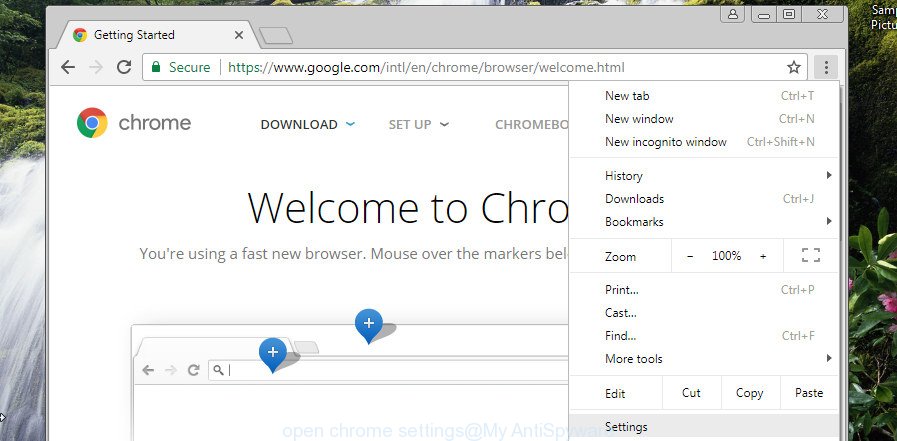
Scroll down to the bottom of the page and click on the “Advanced” link. Now scroll down until the Reset settings section is visible, as shown in the figure below and press the “Reset settings to their original defaults” button.
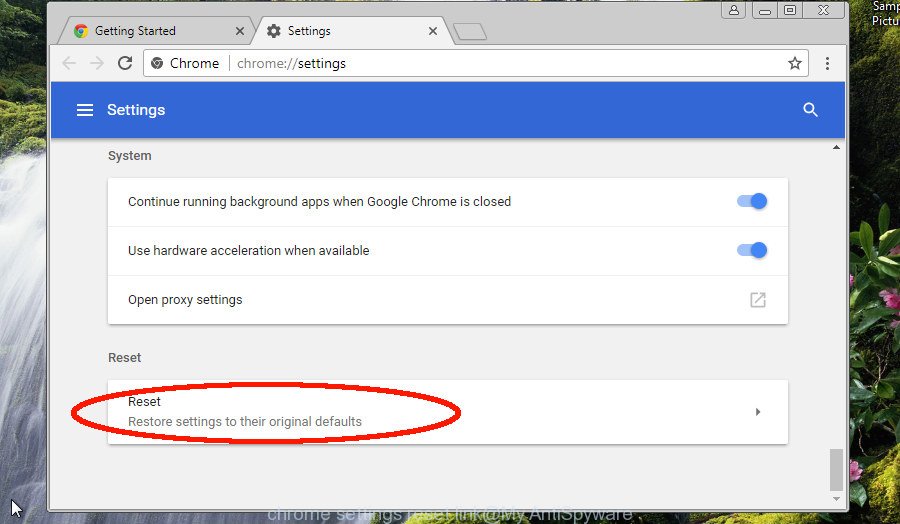
Confirm your action, click the “Reset” button.
Delete Lp.pctonics.com pop-ups from Microsoft Internet Explorer
The Internet Explorer reset is great if your web-browser is hijacked or you have unwanted addo-ons or toolbars on your web browser, which installed by an malicious software.
First, start the Microsoft Internet Explorer, then click ‘gear’ icon ![]() . It will display the Tools drop-down menu on the right part of the browser, then click the “Internet Options” as on the image below.
. It will display the Tools drop-down menu on the right part of the browser, then click the “Internet Options” as on the image below.

In the “Internet Options” screen, select the “Advanced” tab, then click the “Reset” button. The Internet Explorer will open the “Reset Internet Explorer settings” dialog box. Further, click the “Delete personal settings” check box to select it. Next, click the “Reset” button as shown below.

After the task is finished, click “Close” button. Close the IE and restart your system for the changes to take effect. This step will help you to restore your web-browser’s startpage, newtab and search engine by default to default state.
Remove Lp.pctonics.com from Firefox by resetting browser settings
If the Firefox settings like homepage, new tab page and default search engine have been changed by the ad-supported software, then resetting it to the default state can help.
Launch the Firefox and click the menu button (it looks like three stacked lines) at the top right of the web browser screen. Next, click the question-mark icon at the bottom of the drop-down menu. It will display the slide-out menu.
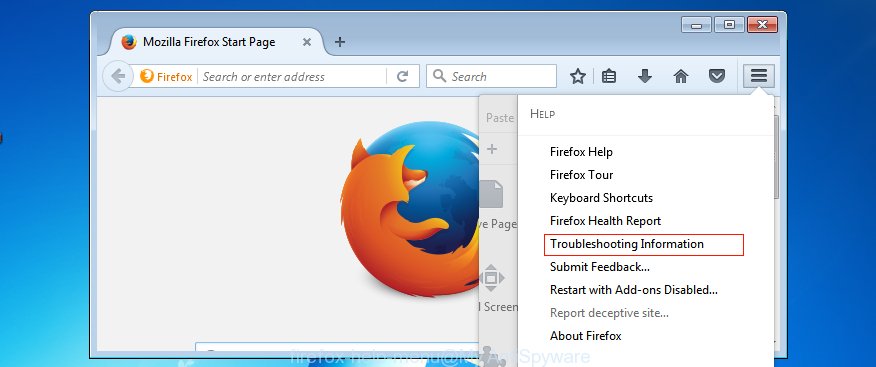
Select the “Troubleshooting information”. If you are unable to access the Help menu, then type “about:support” in your address bar and press Enter. It bring up the “Troubleshooting Information” page like below.
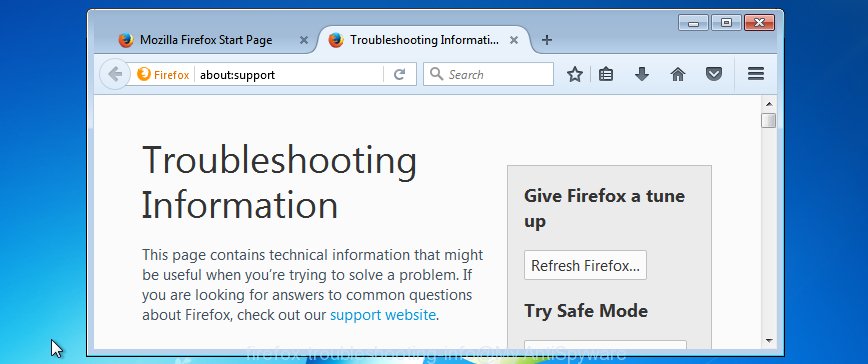
Click the “Refresh Firefox” button at the top right of the Troubleshooting Information page. Select “Refresh Firefox” in the confirmation prompt. The Firefox will begin a process to fix your problems that caused by the ‘ad supported’ software that causes a large amount of unwanted Lp.pctonics.com ads. After, it’s done, click the “Finish” button.
How to remove Lp.pctonics.com pop-up advertisements with free programs
Run malware removal utilities to remove Lp.pctonics.com popup advertisements automatically. The free programs tools specially developed for hijackers, adware and other potentially unwanted applications removal. These tools can delete most of adware from Mozilla Firefox, Chrome, MS Edge and IE. Moreover, it can remove all components of ad supported software from Windows registry and system drives.
Run Zemana Anti-malware to remove Lp.pctonics.com
Zemana Anti-malware highly recommended, because it can detect security threats such ad supported software and adwares which most ‘classic’ antivirus programs fail to pick up on. Moreover, if you have any Lp.pctonics.com popup ads removal problems which cannot be fixed by this utility automatically, then Zemana Anti-malware provides 24X7 online assistance from the highly experienced support staff.
Please go to the link below to download the latest version of Zemana AntiMalware (ZAM) for Windows. Save it on your Microsoft Windows desktop.
165525 downloads
Author: Zemana Ltd
Category: Security tools
Update: July 16, 2019
When the download is finished, close all software and windows on your PC system. Open a directory in which you saved it. Double-click on the icon that’s called Zemana.AntiMalware.Setup as displayed in the figure below.
![]()
When the installation begins, you will see the “Setup wizard” that will help you install Zemana on your machine.
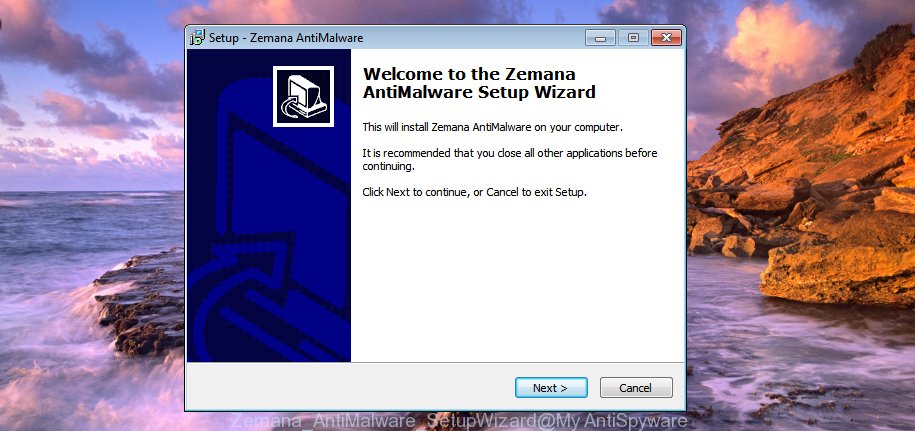
Once installation is complete, you will see window as shown on the image below.
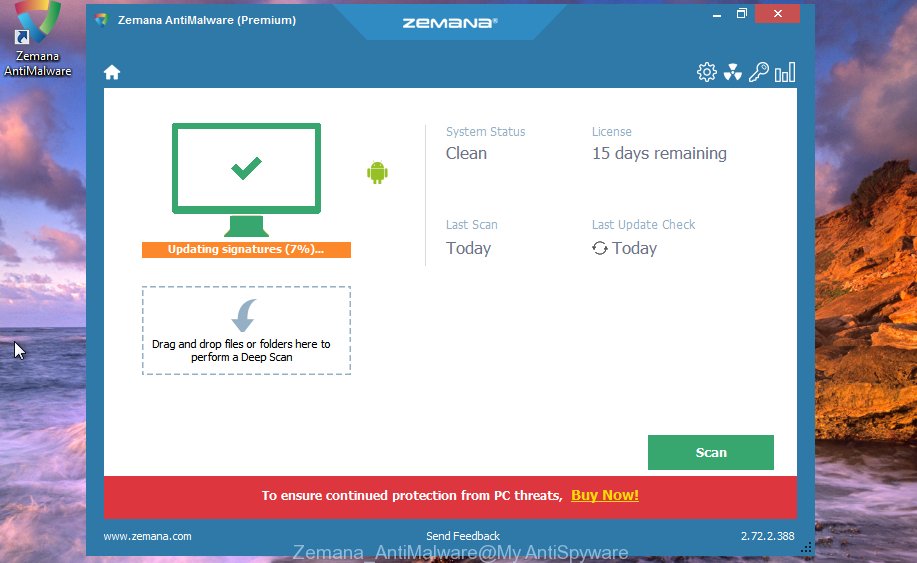
Now click the “Scan” button to begin scanning your computer for the adware which causes annoying Lp.pctonics.com popups. Depending on your PC, the scan may take anywhere from a few minutes to close to an hour. While the Zemana Anti-Malware (ZAM) is scanning, you can see how many objects it has identified either as being malware.

When Zemana completes the scan, Zemana AntiMalware (ZAM) will show a list of all items detected by the scan. All found threats will be marked. You can delete them all by simply click “Next” button.
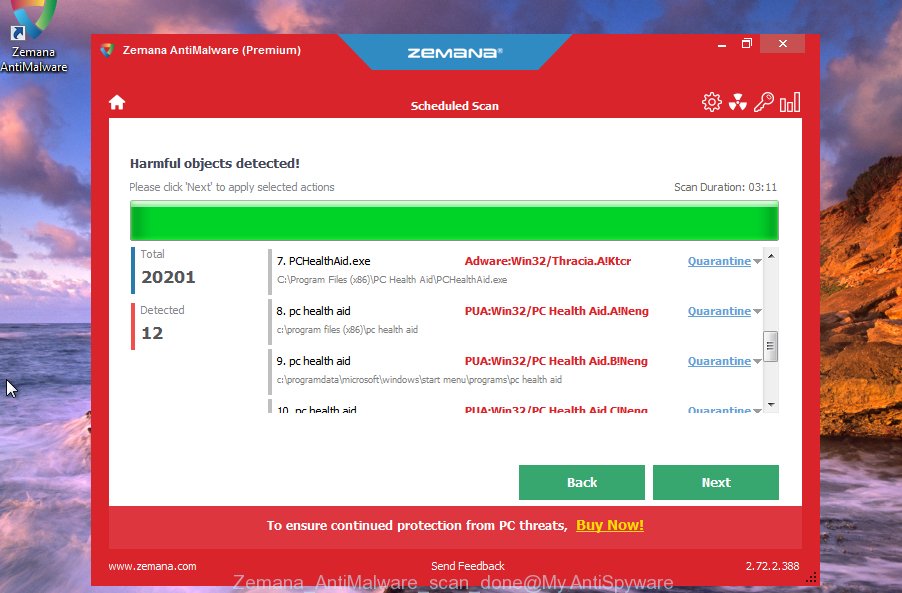
The Zemana Anti-Malware will get rid of ad-supported software responsible for redirecting your browser to Lp.pctonics.com page.
Scan and clean your computer of adware with HitmanPro
Hitman Pro is a portable program which requires no hard setup to identify and remove ‘ad supported’ software responsible for redirecting your browser to Lp.pctonics.com website. The program itself is small in size (only a few Mb). HitmanPro does not need any drivers and special dlls. It’s probably easier to use than any alternative malware removal utilities you’ve ever tried. Hitman Pro works on 64 and 32-bit versions of Windows 10, 8, 7 and XP. It proves that removal tool can be just as effective as the widely known antivirus programs.
Hitman Pro can be downloaded from the following link. Save it directly to your Microsoft Windows Desktop.
Once the downloading process is complete, open the file location. You will see an icon like below.

Double click the Hitman Pro desktop icon. After the utility is opened, you will see a screen as displayed in the figure below.

Further, click “Next” button to begin checking your system for the ‘ad supported’ software which causes undesired Lp.pctonics.com popups. This procedure can take quite a while, so please be patient. When the scan is finished, Hitman Pro will display a list of all items detected by the scan as displayed below.

Make sure all items have ‘checkmark’ and press “Next” button. It will open a dialog box, press the “Activate free license” button.
Use Malwarebytes to remove Lp.pctonics.com redirect
Manual Lp.pctonics.com advertisements removal requires some computer skills. Some files and registry entries that created by the ‘ad supported’ software can be not completely removed. We suggest that run the Malwarebytes Free that are completely clean your PC system of ‘ad supported’ software. Moreover, the free program will help you to delete malicious software, PUPs, hijackers and toolbars that your PC system can be infected too.
MalwareBytes Anti Malware can be downloaded from the following link. Save it to your Desktop so that you can access the file easily.
327744 downloads
Author: Malwarebytes
Category: Security tools
Update: April 15, 2020
Once the download is finished, close all programs and windows on your personal computer. Open a directory in which you saved it. Double-click on the icon that’s named mb3-setup as shown below.
![]()
When the installation starts, you will see the “Setup wizard” that will help you set up Malwarebytes on your computer.
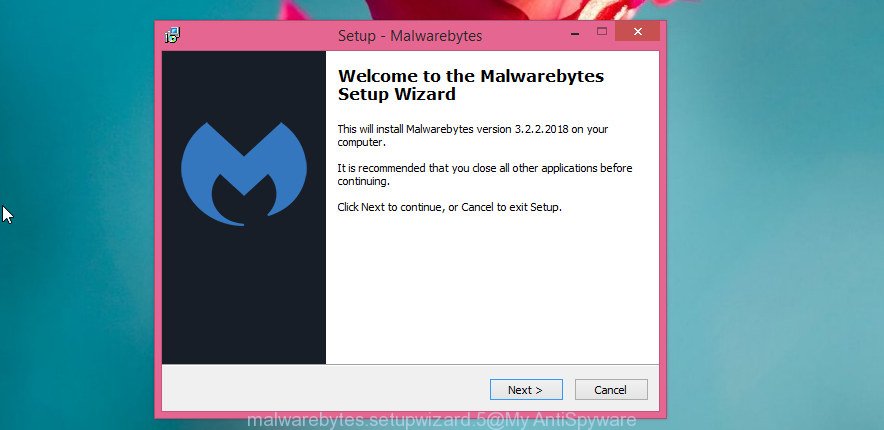
Once install is finished, you will see window as displayed below.
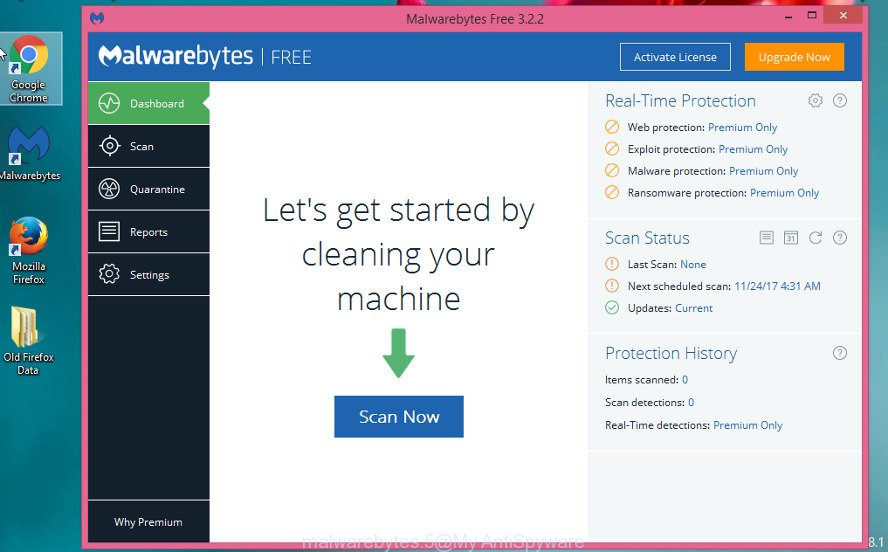
Now click the “Scan Now” button . MalwareBytes tool will begin scanning the whole PC system to find out adware that causes a large number of unwanted Lp.pctonics.com pop-ups. A scan can take anywhere from 10 to 30 minutes, depending on the number of files on your computer and the speed of your personal computer. When a threat is found, the number of the security threats will change accordingly.
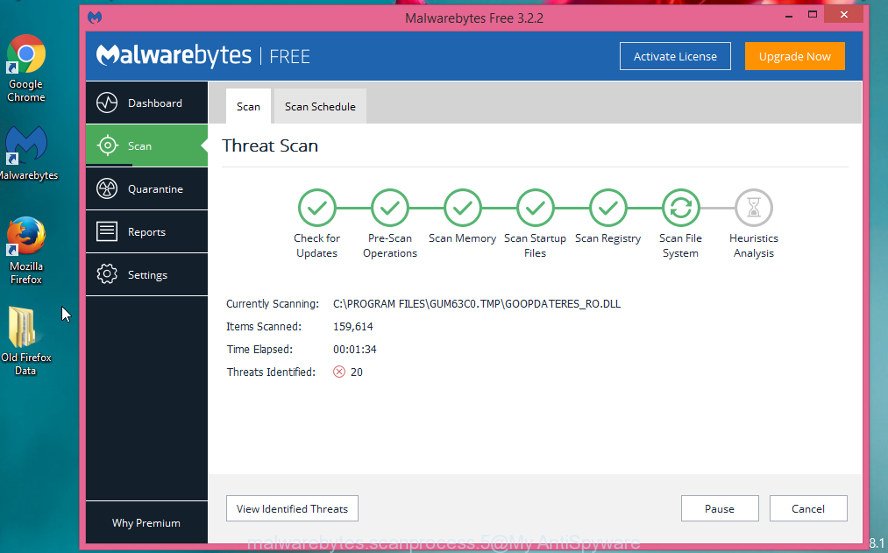
Once MalwareBytes AntiMalware has completed scanning your PC, MalwareBytes will display a list of all items found by the scan. When you are ready, click “Quarantine Selected” button.
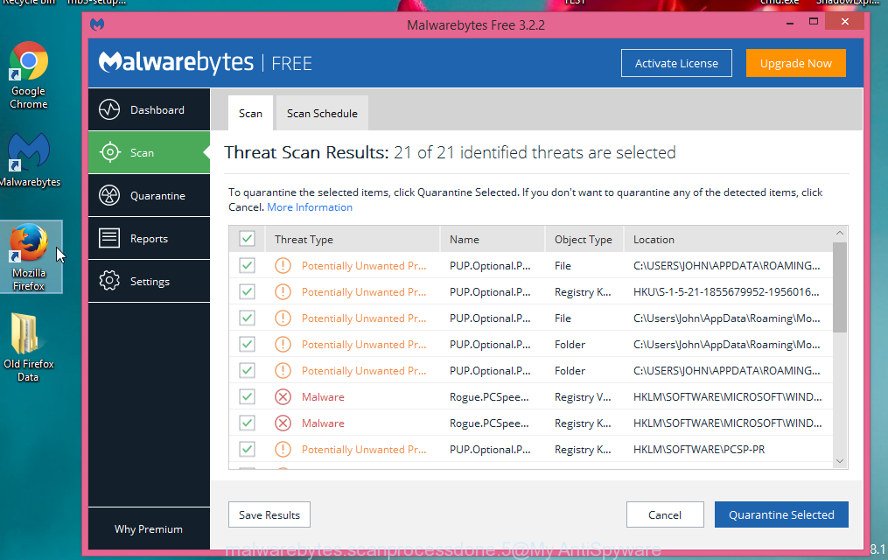
The Malwarebytes will now start to remove ad supported software that cause intrusive Lp.pctonics.com popup advertisements to appear. When finished, you may be prompted to reboot your computer.

The following video explains step-by-step guide on how to delete browser hijacker, adware and other malware with MalwareBytes Free.
Use AdBlocker to block Lp.pctonics.com and stay safe online
If you browse the Web, you can’t avoid malicious advertising. But you can protect your browser against it. Download and run an ad-blocker application. AdGuard is an ad-blocking that can filter out lots of of the malvertising, blocking dynamic scripts from loading malicious content.
Installing the AdGuard is simple. First you will need to download AdGuard on your Microsoft Windows Desktop from the following link.
27041 downloads
Version: 6.4
Author: © Adguard
Category: Security tools
Update: November 15, 2018
After downloading it, double-click the downloaded file to start it. The “Setup Wizard” window will show up on the computer screen as shown in the following example.
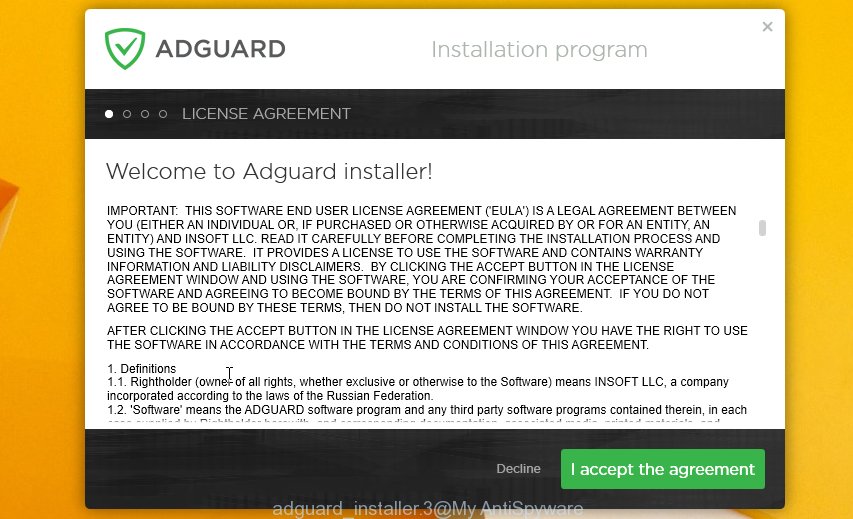
Follow the prompts. AdGuard will then be installed and an icon will be placed on your desktop. A window will show up asking you to confirm that you want to see a quick guide as displayed in the figure below.

Press “Skip” button to close the window and use the default settings, or click “Get Started” to see an quick guidance which will help you get to know AdGuard better.
Each time, when you start your computer, AdGuard will launch automatically and stop pop-up advertisements, Lp.pctonics.com redirect, as well as other harmful or misleading web-sites. For an overview of all the features of the program, or to change its settings you can simply double-click on the AdGuard icon, which can be found on your desktop.
Don’t know how your internet browser has been hijacked by Lp.pctonics.com pop-up advertisements?
Many apps developed to display a large amount of undesired ads within your PC’s browser. So, when you installing free applications, carefully read the disclaimers, choose the Custom or Advanced install type to watch for bundled apps that are being installed, because certain of the applications are potentially unwanted programs like this adware which cause unwanted Lp.pctonics.com pop-ups to appear.
To sum up
Now your computer should be free of the adware responsible for redirections to Lp.pctonics.com. We suggest that you keep AdGuard (to help you block unwanted pop-up ads and annoying malicious web sites) and Zemana (to periodically scan your computer for new adwares and other malware). Probably you are running an older version of Java or Adobe Flash Player. This can be a security risk, so download and install the latest version right now.
If you are still having problems while trying to remove Lp.pctonics.com pop-ups from the Google Chrome, Internet Explorer, Microsoft Edge and Mozilla Firefox, then ask for help in our Spyware/Malware removal forum.




















